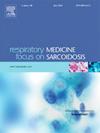哮喘人群甘油三酯-葡萄糖指数与死亡率的关系
IF 3.5
3区 医学
Q2 CARDIAC & CARDIOVASCULAR SYSTEMS
引用次数: 0
摘要
目的:探讨甘油三酯-葡萄糖(TyG)指数与哮喘患者死亡率之间的关系,目前尚无证据表明代谢功能障碍与哮喘结局有关。研究设计和方法:我们分析了2001-2018年国家健康与营养检查调查(NHANES)中5985名哮喘成年人的数据。我们采用多变量加权Cox回归、平滑曲线拟合、生存曲线分析和亚组分析来评估TyG指数与生存率的相关性。结果:TyG指数越高,哮喘患者全因死亡率越高。较高TyG指数类别(与TyG < 8相比)的校正风险比(HR)为:8≤TyG < 9时1.69 (95% CI: 1.28, 2.24, p < 0.001), 9≤TyG < 10时2.04 (95% CI: 1.51, 2.76, p < 0.001), TyG≥10时2.94 (95% CI: 2.03, 4.28, p < 0.001)。限制三次样条分析显示TyG评分与死亡率之间存在非线性关系。Kaplan-Meier曲线显示,TyG指数越高,死亡风险越大。结论:TyG指数是哮喘患者死亡率的重要预测因子,突出了其潜在的风险分层。将TyG指数纳入临床评估可以改善监测和管理。未来的研究应探讨针对TyG指数的干预措施,以提高哮喘患者的生存率和生活质量。本文章由计算机程序翻译,如有差异,请以英文原文为准。
Association between the triglyceride-glucose index and mortality in the asthma population
Objective
To explore the relationship between the triglyceride-glucose (TyG) index and mortality in individuals with asthma, given the inconclusive evidence linking metabolic dysfunction to asthma outcomes.
Research design and methods
We analyzed data from 5985 adults with asthma from the National Health and Nutrition Examination Survey (NHANES) 2001–2018. We used multivariable weighted Cox regression, smoothing curve fitting, survival curve analysis, and subgroup analysis to assess the correlation between the TyG index and survival rates.
Results
A higher TyG index significantly correlated with increased all-cause mortality in asthmatics. Adjusted hazard ratios (HR) for higher TyG index categories (compared to TyG <8) were: 1.69 (95 % CI: 1.28, 2.24, p < 0.001) for 8 ≤ TyG <9, 2.04 (95 % CI: 1.51, 2.76, p < 0.001) for 9 ≤ TyG <10, and 2.94 (95 % CI: 2.03, 4.28, p < 0.001) for TyG ≥10. Restricted cubic spline analysis revealed a nonlinear relationship between the TyG score and mortality. Kaplan-Meier curves showed higher TyG indexes associated with greater mortality risk.
Conclusions
The TyG index is a significant predictor of mortality in asthma patients, highlighting its potential for risk stratification. Incorporating the TyG index into clinical assessments could improve monitoring and management. Future research should investigate interventions targeting the TyG index to enhance survival and quality of life in asthma patients.
求助全文
通过发布文献求助,成功后即可免费获取论文全文。
去求助
来源期刊

Respiratory medicine
医学-呼吸系统
CiteScore
7.50
自引率
0.00%
发文量
199
审稿时长
38 days
期刊介绍:
Respiratory Medicine is an internationally-renowned journal devoted to the rapid publication of clinically-relevant respiratory medicine research. It combines cutting-edge original research with state-of-the-art reviews dealing with all aspects of respiratory diseases and therapeutic interventions. Topics include adult and paediatric medicine, epidemiology, immunology and cell biology, physiology, occupational disorders, and the role of allergens and pollutants.
Respiratory Medicine is increasingly the journal of choice for publication of phased trial work, commenting on effectiveness, dosage and methods of action.
 求助内容:
求助内容: 应助结果提醒方式:
应助结果提醒方式:


